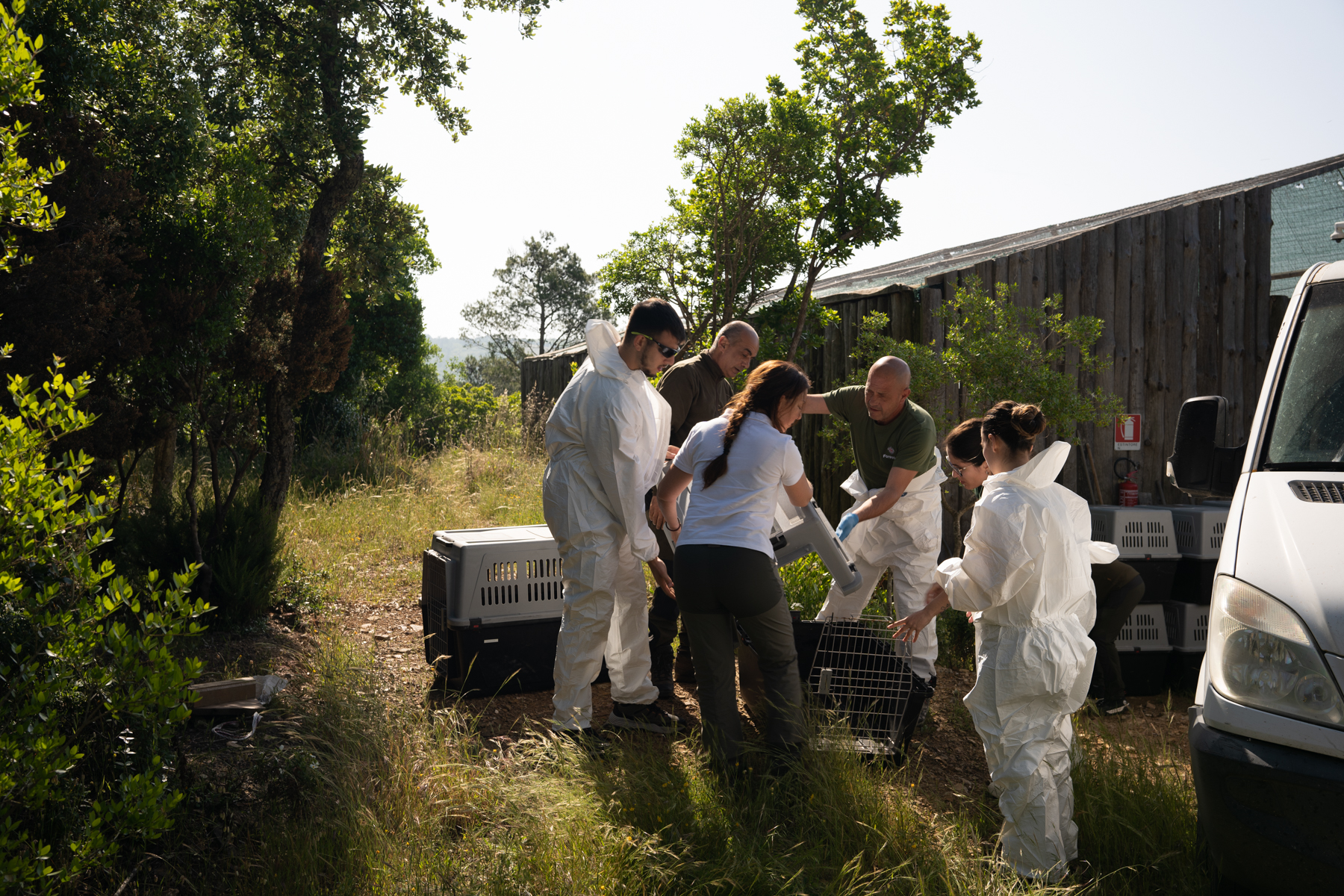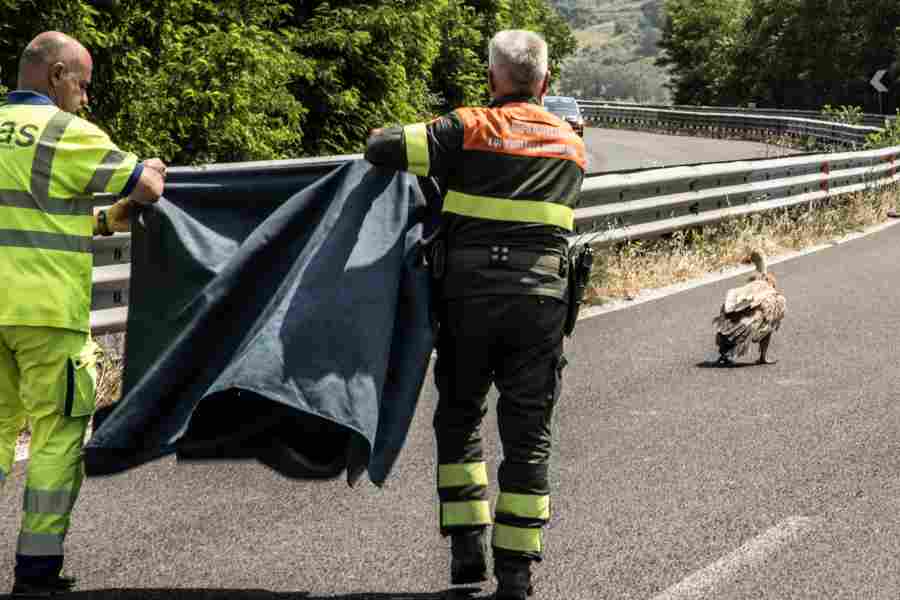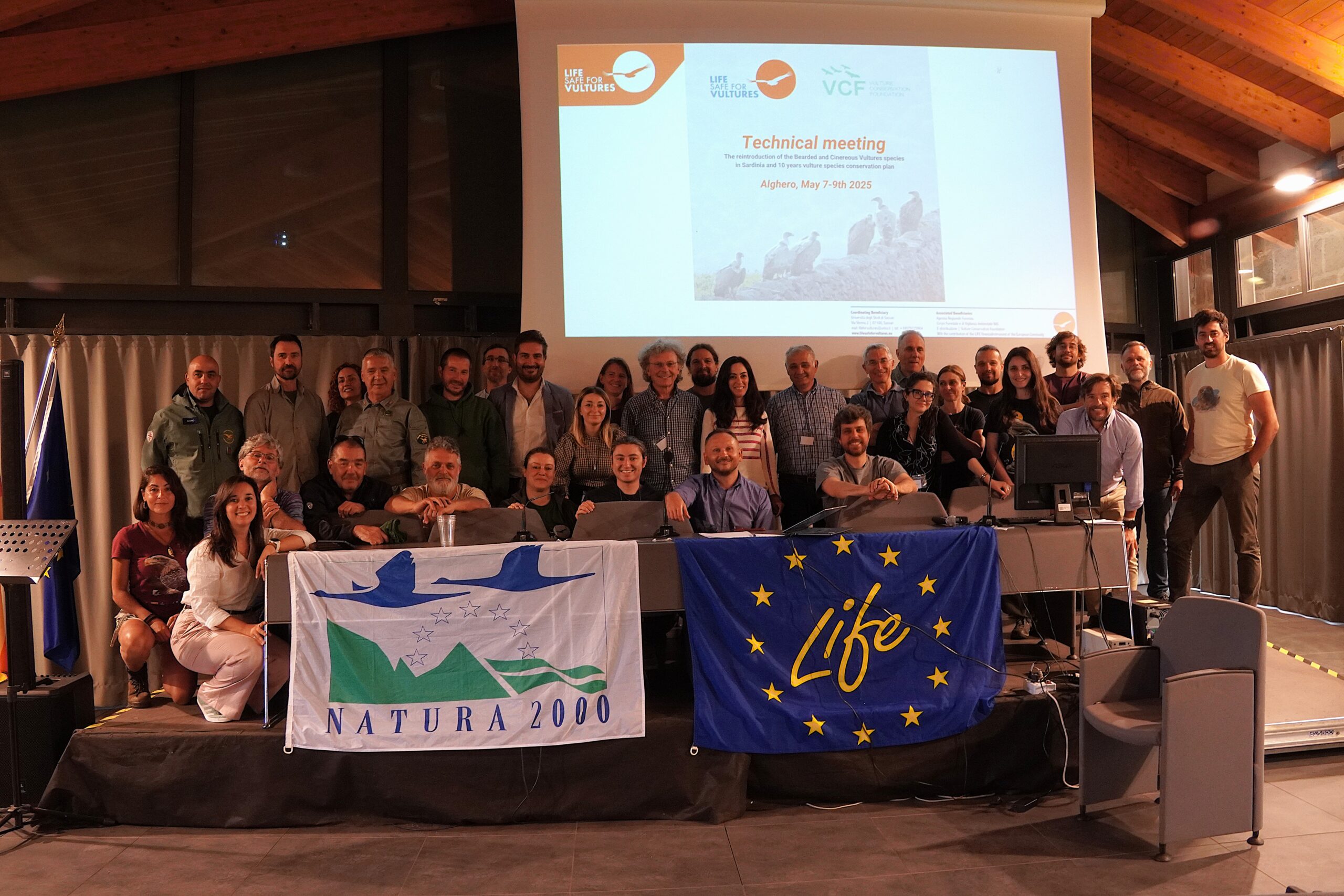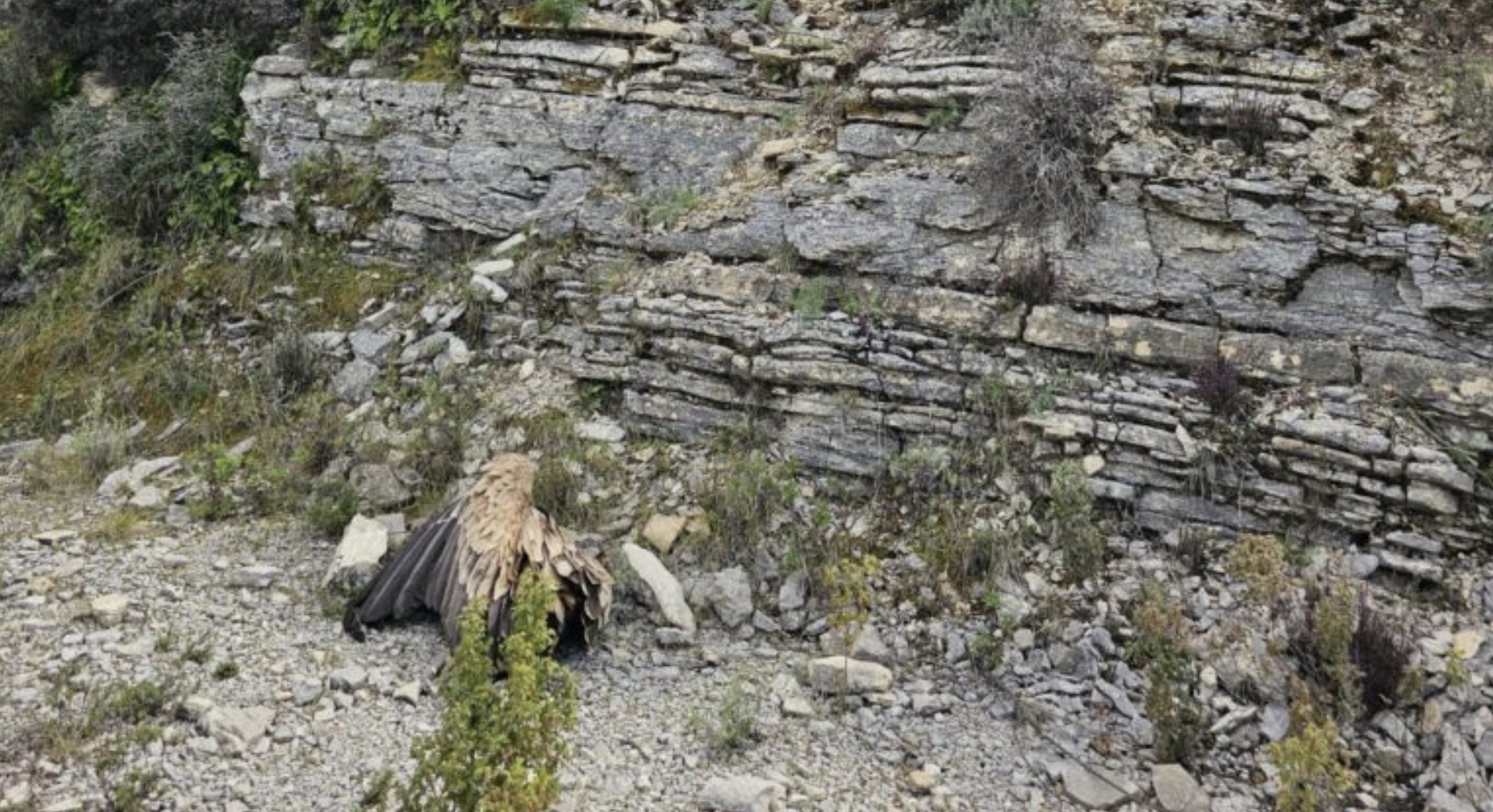
One of the released Griffon Vultures (c) LIFE Under Griffon Wings
The LIFE Under Griffon Wings project released 13 more Griffon Vultures in Sardinia to help boost the local population of the species. This release brings the total number of vultures reintroduced to the wild of Sardinia as part of the project to 51 birds!
Another milestone for the conservation of Griffon vultures in Sardinia as 13 new vultures were recently released into the wild.
We, the Vulture Conservation Foundation, transported ten birds from Spain and ARTIS Amsterdam Royal Zoo, provided the three other vultures. The birds spent a quarantine period in the Bonassai Wildlife Recovery Center before adapting to their new environment at an acclimatisation aviary at the release site of Monte Minerva. The supply of food to the griffons was possible thanks to the collaboration activated by the Bonassai Center with seventy Nurra breeders and the ASL Veterinary Service. They provided over a thousand sheep carcasses for animals in aviaries and for the feeding site set up in Prigionette and Monte Minerva where Sardinian Griffon vultures regularly feed and a rare pair of Egyptian vultures visit.
Ahead of their release into the wild, the team began the preparations by examining the vultures and placing GPS transmitters on six of them. The GPS technology will allow the LIFE Under Griffon Wings team to monitor the birds, understand better their distribution area and identify any threats present in the area. Before their release, the birds were named! The ones from ARTIS Amsterdam Royal Zoo were named Artis 3, Artis 4 and Artis 5 and the ones we transported were given names from some of the centres that are part of the griffon community. These include Bosa, Montresta, Padria, Macomer, Sindia, Cossoine, Semestene, Pozzomaggiore, Mara and Maddalena (an island where there are no griffons but which has been visited by Spanish ones in the last couple of months).
Video: https://www.facebook.com/watch/?v=381355642498217
On Tuesday 25 June, the team finally released the birds! Now that 13 more Griffon vultures are free to roam the Sardinian skies, the total number of released vultures amount to 51, as last year the project reintroduced 38 Griffon Vultures to the wild of Sardinia. The birds released came from rehabilitation centres in Spain and zoos across Europe. These releases helped restock the local population of the species, increasing their numbers to 180-200!
Some photographs of the vultures after their release
The LIFE Under Griffon Wings project continuously tracks their movements thanks to the GPS transmitters, camera traps and their fieldwork observing the vultures in the wild.
To date, the project has sighted all Dutch birds provided by ARTIS and five out of the ten we transported from Spain -Maddalena, Pozzomaggiore, Macomer, Semestene and Sindia.
Sassari University carries out the monitoring actions with the collaboration of environmental associations and, in cases of animals in difficulty, with the contribution of the Agenzia Regionale Forestas and Corpo Forestale e di Vigilanza Ambientale.
In the photos, you can see Macomer, Semestene, Sindia and Artis 3.
Griffon Vultures in Sardinia

Distributed over the whole island up to the late 1940s with an estimated population of 800 – 1200 individuals, the population of Griffon vultures in Sardinia dropped rapidly after the Second World War until the outlawing of poisoned baits in 1977. Now the species is restricted to the north-western part of the island and during a 2018 survey saw the population increase from the survey carried out in 2017 and consists of 50 territorial pairs, 37 breeding pairs and over 130 individuals. With the new releases, the population amounts to approximately 180-200 Griffon Vultures.
LIFE Under Griffon Wings
Led by Sassari University, the LIFE Under Griffon Wings project aims to improve the conservation status of Griffon Vultures. Their conservation efforts include improving food availability and establishing a network of farm feeding stations that are managed by the livestock breeders themselves. Furthermore, forming an anti-poison dog unit and developing communication actions to raise awareness on the threat caused by the illegal use of poisoned baits as well as carrying out an extensive restocking programme to enhance the small population by translocating between 45 and 60 birds from wildlife rehabilitation centres in Spain to Sardinia.
The Vulture Conservation Foundation supports this important conservation project which was developed by the University of Sassari in partnership with the Municipality of Bosa, the Forestry Agency and the Corpo Forestale di Vigilanza Ambientale. The project is implemented in collaboration with the regional Departments of Environmental Protection and Health, the Regional Natural Park of Porto Conte, the Instituto Zooprofilattico Sperimentale of Sardinia.







